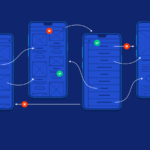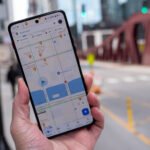In the fast-paced world of mobile app development, creating a compelling User Experience (UX) is essential for success. UX design focuses on optimizing the interaction between users and an app to ensure it is intuitive, enjoyable, and efficient. With millions of apps available, standing out requires not just functional features but a seamless and satisfying user experience. This guide will delve into the key principles and best practices of UX design for mobile apps.
Understanding UX Design
UX design is the process of enhancing user satisfaction by improving the usability, accessibility, and pleasure provided in the interaction between the user and the product. In mobile apps, UX design encompasses everything from the app’s layout and navigation to its responsiveness and visual appeal.
GeoJSON Data and Digital Exploration
GeoJason.info provides information on GeoJSON, a format for encoding geographic data. For those seeking other forms of digital exploration, exploring options like real money online roulette can provide a different kind of engagement. Whether it’s the precision of geographic data or the excitement of online games, diverse digital activities enrich our lives.
Key Principles of UX Design in Mobile Apps
- User-Centered Design Focus on the needs, preferences, and behaviors of your target users. Conduct user research, including surveys, interviews, and usability testing, to understand your users’ pain points and expectations. Design features and interfaces that address these needs and enhance their overall experience.
- Consistency Consistent design elements, such as colors, fonts, and navigation patterns, help users familiarize themselves with the app quickly. Consistency across screens and interactions reduces cognitive load and makes the app more intuitive.
- Simplicity and Clarity Keep the interface clean and uncluttered. Prioritize simplicity by using clear, concise language and avoiding unnecessary elements. An intuitive design allows users to navigate and accomplish tasks with minimal effort.
- Responsive Design Ensure that your app performs well on various devices and screen sizes. A responsive design adapts to different resolutions and orientations, providing a consistent user experience across smartphones and tablets.
- Feedback and Affordances Provide users with immediate feedback on their actions. Whether it’s a visual change, a sound, or a vibration, feedback reassures users that their actions have been registered. Affordances, such as buttons that look clickable, help users understand how to interact with the app.
Explore Exciting Online Gaming Options
GeoJason provides insightful guides and resources for enthusiasts seeking engaging online entertainment. For those interested in combining strategy and luck, Camooweal online pokies offer a fun and interactive gaming experience. These games are easy to access and provide hours of enjoyment for players of all levels. Staying informed about the latest online trends ensures you never miss out on exciting opportunities.

- Accessibility Design your app to be accessible to all users, including those with disabilities. Implement features like text-to-speech, voice commands, and high-contrast modes to ensure your app is usable by everyone.
- Performance Optimization A sluggish app can frustrate users and lead to high abandonment rates. Optimize your app’s performance by reducing load times, minimizing animations, and managing resources efficiently.
Best Practices for UX Design in Mobile Apps
- Prioritize Onboarding An effective onboarding process introduces users to the app’s key features and functionalities. Use interactive tutorials, tooltips, and walkthroughs to help users get started and understand how to use the app.
- Design for Touch Interactions Mobile apps are primarily used through touch interactions. Design buttons and interactive elements that are large enough to tap easily, and ensure that gestures like swiping and pinching are intuitive.
- Simplify Navigation Ensure that users can easily find their way around the app. Implement a logical navigation structure with clear menus, intuitive icons, and easy access to key features.
- Use Visual Hierarchy Guide users’ attention to important elements by using visual hierarchy. Employ techniques such as size, color contrast, and spacing to emphasize primary actions and content.
- Incorporate User Feedback Regularly gather feedback from users through surveys, reviews, and usability tests. Use this feedback to make informed design decisions and continuously improve the app’s UX.
- Optimize for Battery and Data Usage Mobile users are often concerned about battery life and data consumption. Design your app to be efficient in both aspects, minimizing background processes and optimizing data usage.
- Regular Updates and Iterations UX design is an ongoing process. Continuously monitor user behavior, gather feedback, and update the app to address issues and enhance the user experience.
Bonus Fun
Step into online games that offer engaging challenges and prizes. Burketown bonus provides exciting gameplay and smooth mechanics. Each session is fun and memorable. Start playing today and maximize your winnings!
Discover Informative Insights and Entertainment
Geojason.info provides interesting articles and valuable resources for curious minds. For leisure and excitement, try casino games online for thrilling gameplay. It’s easy to enjoy engaging entertainment while staying informed. Add some fun to your routine today.
Conclusion
User Experience (UX) design is a critical component of mobile app development that directly impacts user satisfaction and engagement. By adhering to key principles such as user-centered design, simplicity, and responsiveness, and following best practices like optimizing onboarding and navigation, you can create mobile apps that delight users and stand out in a crowded market. Prioritize UX design to ensure that your app is not only functional but also enjoyable and easy to use, leading to higher user retention and success.











